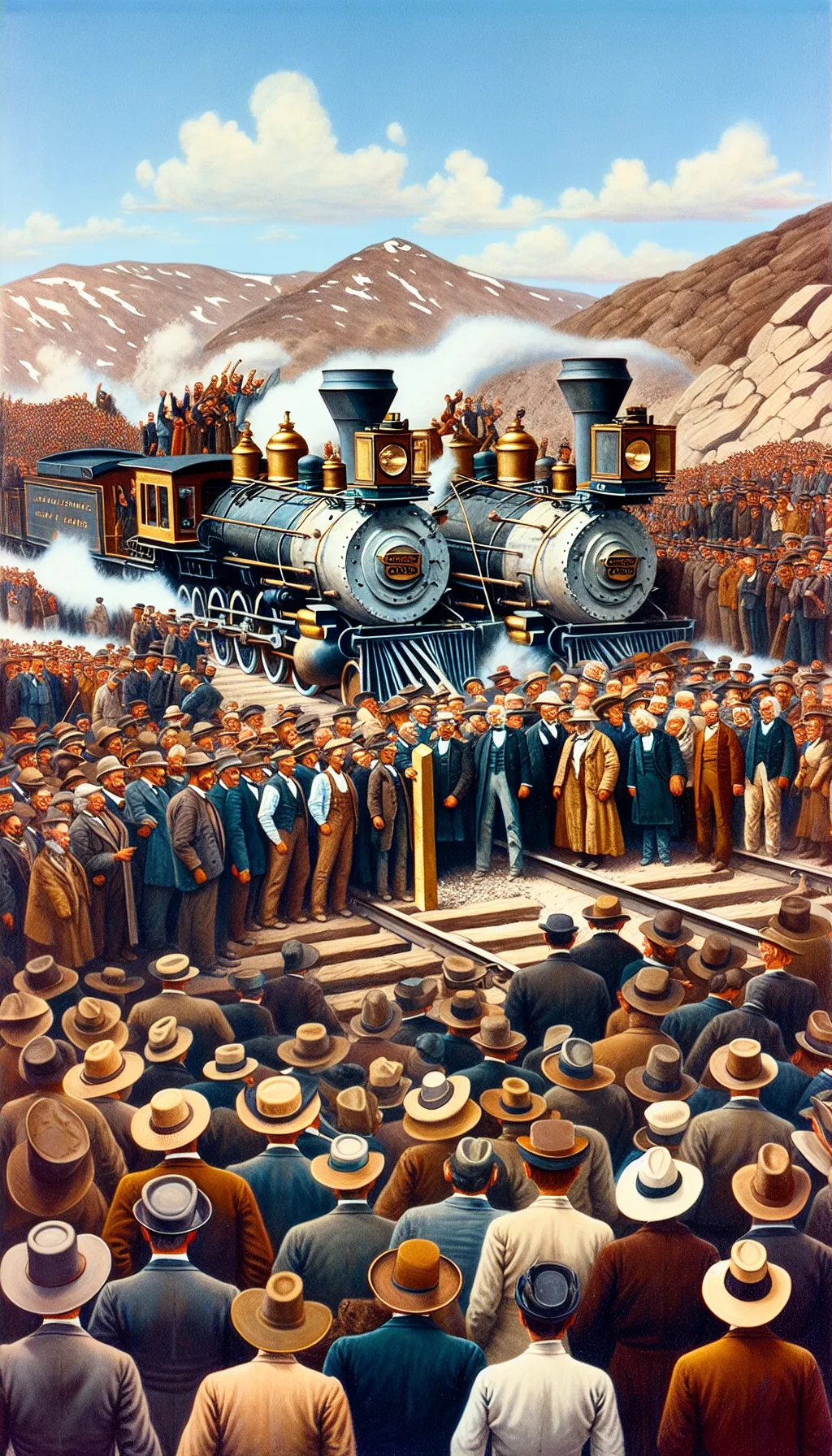United States – The Golden Spike: Uniting a Nation - May 10, 1869
TLDR;
- Event: On May 10, 1869, the First Transcontinental Railroad was completed at Promontory Summit, Utah, connecting the U.S. from coast to coast.
- Workforce: Thousands, including many Chinese immigrants (80% of Central Pacific’s workforce), labored under harsh conditions to build the railroad.
- Impact: The railroad reduced cross-country travel from months to days, transforming American commerce and mobility.
- Controversy: The construction had significant human costs, including the exploitation of Chinese workers and the displacement of Native American tribes.
–
Story
The air was electric with anticipation on May 10, 1869, as a crowd gathered at Promontory Summit, Utah. The clang of hammers and the hiss of steam engines filled the air, but all eyes were on a single, gleaming spike. This was no ordinary day; it was the day the First Transcontinental Railroad would be completed, forever changing the face of America.

The journey to this moment had been long and arduous. The Central Pacific Railroad had pushed eastward from California, while the Union Pacific Railroad had driven westward from Nebraska. Thousands of workers, including many Chinese immigrants who made up around 80% of the Central Pacific workforce, had toiled through harsh winters, treacherous mountains, and endless plains. Their sweat and determination laid down the iron tracks that would unite a nation.
As the final spike, a regular iron spike, was driven into the last tie (the ceremonial golden spike was later removed and preserved), a cheer erupted from the crowd. The telegraph wires hummed with the message: ‘The last rail is laid! The last spike is driven! The Pacific Railroad is completed!’ This message was sent simultaneously across the nation. The continent was now connected from coast to coast, reducing travel time from months to mere days. It was a triumph of engineering and human spirit, a testament to what could be achieved when people dared to dream big.
But this monumental achievement was not without its costs. The laborers, especially the Chinese workers who faced severe discrimination despite their indispensable role, built the railroad under grueling conditions. The Sierra Nevada winters, particularly the brutal 1866-67 season, were so extreme that avalanches and snowdrifts buried entire work camps, killing many Chinese laborers. The expansion westward also brought profound and devastating changes to the lives of Native American tribes, accelerating their displacement, military conflicts, and the destruction of buffalo herds, which many tribes depended on.
The completion of the Transcontinental Railroad was a turning point in American history, opening new frontiers and opportunities, but also posing new challenges and questions about the nation’s future.
–
| Would a different approach to labor and indigenous relations have changed the legacy of the Transcontinental Railroad? |